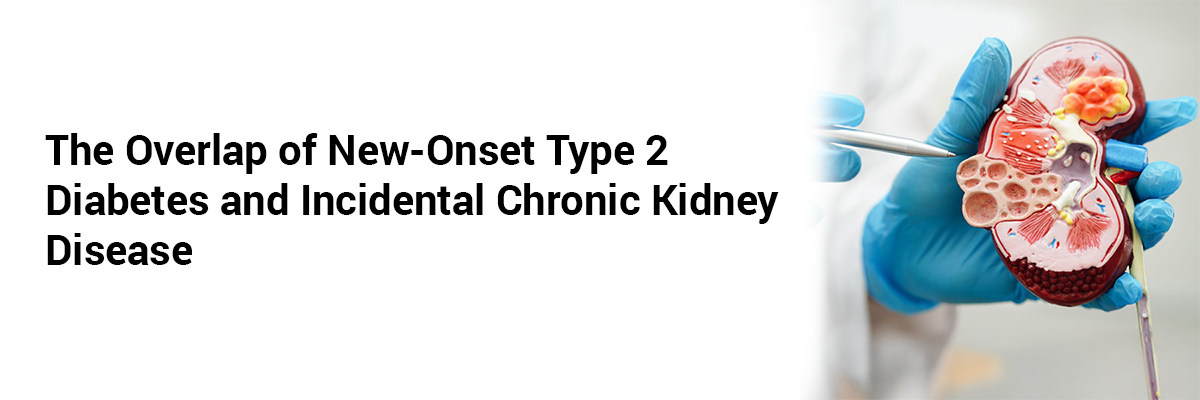
The Overlap of New-Onset Type 2 Diabetes and Incidental Chronic Kidney Disease
Approximately one-third of patients newly diagnosed with type 2 diabetes have incidental chronic kidney disease (CKD), according to a study published Feb. 18, 2025 in Cureus.1
The objective of this cross-sectional study was to ascertain the prevalence of incidental CKD in newly diagnosed type 2 diabetes by active screening. It was conducted from July 2023 to November 2024 with 202 newly diagnosed drug-naïve type 2 diabetes patients. The average age of participants in the study was 49.1 years (age ranging from 23-85 years). Estimated glomerular filtration rate (eGFR) and urine albumin creatinine ratio (UACR) were the parameters used to diagnose CKD.
The mean HbA1c at the time of enrolment was 8.5%, with only 28.7% of patients having an HbA1c below 7%. Hypertension was present in ~61% of patients. The mean GFR was 96.4 mL/min/1.73 m², and the mean UACR was 144.5 mg/g.
Out of the 202 participants, 68 (33.7%) were diagnosed with CKD based on a glomerular filtration rate (GFR) below 60 mL/min/1.73 m² and/or a urine albumin-to-creatinine ratio (UACR) of 30 mg/g or greater. The prevalence of CKD categories was as follows: G1 (71.3%), G2 (24.2%), G3a (3.0%), and G3b (1.5%). None of the patients had CKD G4 or G5. Regarding albuminuria, 38.1% had UACR <10 mg/g, 31.2% of patients had a UACR between 10–30 mg/g, 22.8% had levels between 30–300 mg/g, and 7.9% had a UACR exceeding 300 mg/g. Stepwise binary regression analysis identified older age and elevated HbA1c levels as significant factors associated with the risk of CKD (GFR< 60 mL/minute/1.73 m2 and/or UACR ≥30 mg/g).
Type 2 diabetes is often detected at a later stage, when complications have already set in. Early identification of CKD is crucial for timely intervention to prevent its progression to end-stage renal disease (ESRD) and improve long-term outcomes. The high prevalence of incidental CKD in this study highlights the need for routine screening using eGFR and UACR at the time of diagnosis of type 2 diabetes for early identification and intervention. The study also underscores the importance of patient education and awareness and individualized treatment plans. Clinicians should prioritize aggressive glycemic control and risk factor management, particularly in older patients and those with poor glycemic control.
Reference
1. Duha A Alidrisi, et al. Prevalence of and factors associated with incidental chronic kidney disease in patients newly diagnosed with type 2 diabetes mellitus. Cureus. 2025 Feb 18;17(2):e79235. doi: 10.7759/cureus.79235.













Please login to comment on this article